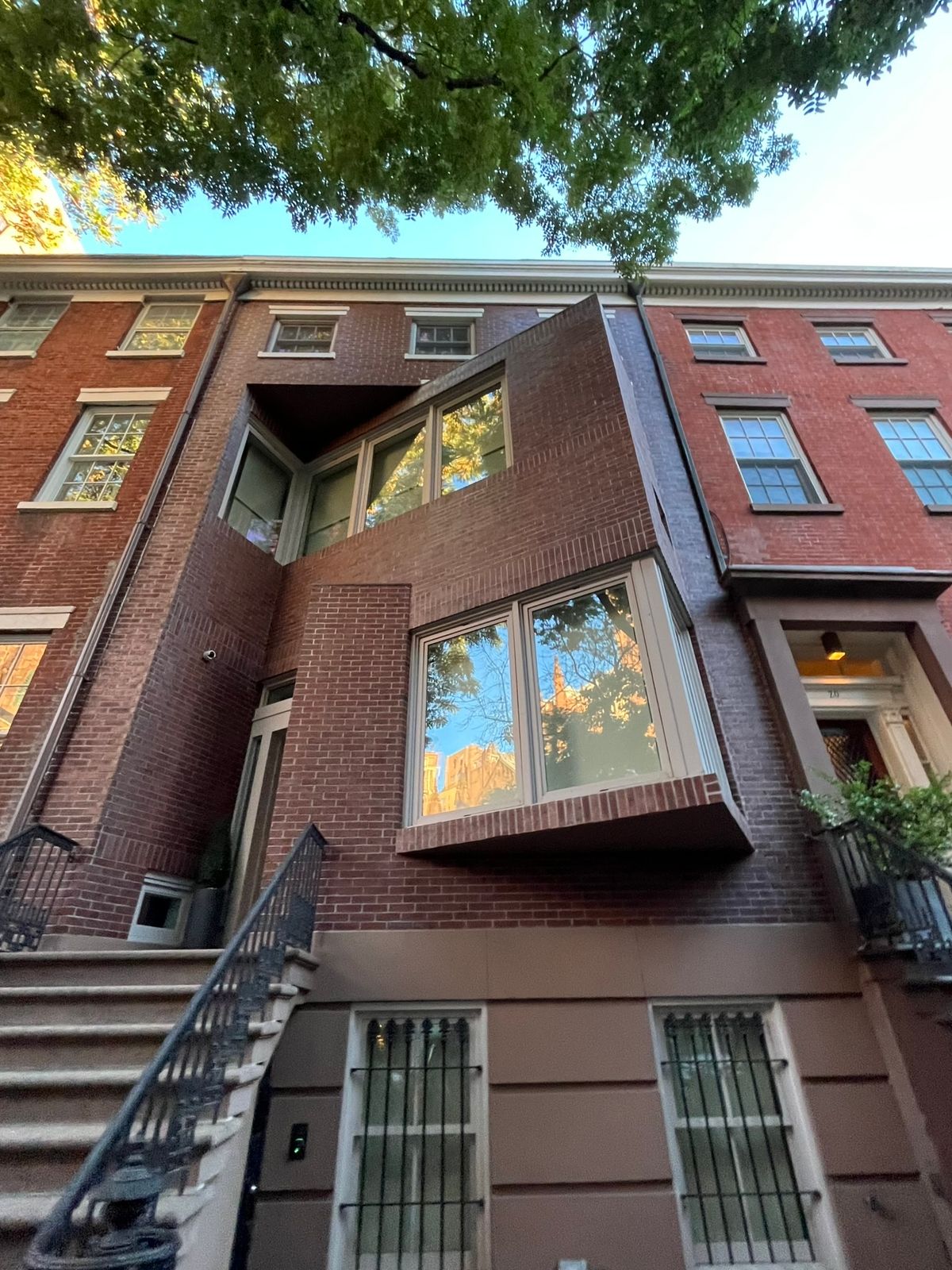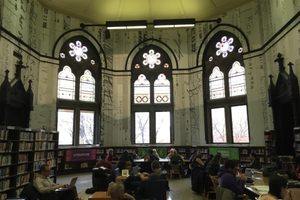About
West 11th is one of Greenwich Village's most idyllic streets. Nestled in between Fifth and Sixth Avenues, Charles Merrill, co-founder of Merrill Lynch was so taken with it, he bought a Greek revival townhouse at Number 18. Walking down the street today is a journey characterized by the prosperity and uniformity of the Village. Until you reach number 18 that is.
In a row of red brick townhouses, Lynch's former home juts out at a disconcerting and awkward right angle to the street. The oddly shaped building tells the story of one of New York's most interesting and unknown events when around lunchtime on Friday, March 6th, 1970, the house disappeared in a violent bomb blast. A cell of radical left wing students had been preparing pipe bombs in the basement, when their inexperience with dynamite destroyed the building in what became known as the Weathermen Townhouse Explosion.
The Weathermen were members of the radical Weather Underground group. Named after a lyric in Bob Dylan's Subterranean Homesick Blues ("You don't need a weatherman to know which way the wind blows"), the protest group was founded at the University of Michigan in the late 1960s. A militant faction of the Students for Democratic Society, the "Weathermen," as they called themselves, protested the Vietnam war by bombing the US Capitol, the Pentagon, and organizing the "Days of Rage" protest in Chicago in 1969.
On the ill-fated day of March 6th, two of the Weathermen were working on making pipe bombs in the basement of Number 18. Diana Oughton, a 28-year old community college teacher, and Terry Robbins, a 23-year old left wing activist who had been part of the Kent State campus riots in 1968, were making the bombs using dynamite and and nails as shrapnel. Their plan was supposedly to bomb an officer's party at Fort Dix in New Jersey, and the library of Columbia University. Unfortunately Robbins' inexperience with explosives caused him to cross wires and the resulting explosion completely demolished the townhouse in an instant. A third member of the cell, Ted Gold, was walking into the house when it exploded, and he was killed by collapsing masonry. Upstairs the two remaining members of the group, Kathy Boudin, who had been in the shower and emerged naked, and Cathy Wilkerson, who was naked from the waist up from having her blouse blown, off stumbled onto the street. Susan Wager, an ex-wife of Henry Fonda, who was a neighbor, took them inside where they showered, and they changed into the fresh change of clothes Wager gave them. They fled into the subway. Their leaving so quickly was considered suspicious, and was the first sign to authorities that the explosion was not an accident.
A police search of the rubble yielded a live anti-tank artillery shell, 57 sticks of dynamite, four pipe bombs and a map of the network of tunnels underneath Columbia University. But of Boudin and Wilkerson, no trace was to be seen. For nearly a decade they evaded capture, despite being on the FBI's most wanted list. Wilkerson finally surrendered in 1980, and Boudin was arrested taking part in the 1981 Brink's armored car robbery that resulted in the killing of two policemen and an armed guard.
The house at Number 18 was reconstructed in 1978 by modernist architect Hugh Hardy into the weirdly askew angular home it is today. It is currently for sale as though it were any other luxury home on the block. The only reminder of the terrible explosion that took the lives of three radicals in the home is the extraordinarily angled facade in the middle of it, a peculiar monument to one of New York's most bizarre and unknown stories.
Related Tags
Community Contributors
Added By
Published
December 9, 2014









































